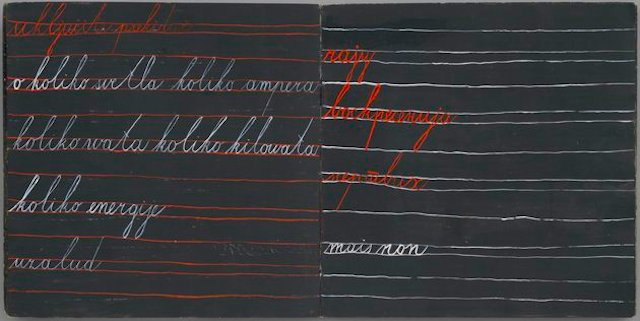Art
Anti-art for art’s sake: Gorgona
Active from 1959 until the late 1960s, the Gorgona group continued the legacy of collective art making in Croatia after Exat 51 disbanded in 1956. Like Exat, Gorgona advocated not a particular visual style, but rather a shared ideology. For Gorgona, a belief in individual artistic expression, creative autonomy, and a doctrine of anti-art brought the members of the group together.
Comprised of members from various creative fields, including the artists Josip Vaništa, Martin Jevšovar, Julije Knifer, and Đuro Seder, art critics Dimitrije Bašičević Mangelos, Matko Meštrović, and Radoslav Putar, sculptor Ivan Kožarić, and architect Miljenko Horvat, Gorgona was not so much against art as it was against traditional practices and approaches to making and distributing art. Although each member had his own style or area of interest, the group offered a supportive framework from which the members could freely create.
They sought alternative ways to engage with the art world, occasionally exhibiting their work at a frame shop called G Studio, where they reimagined typical exhibition practice by showing very few works (and often just a singular work of art) at one time. They also regularly collaborated on mail art projects in which one member would send a quotation or a literary excerpt to the others, and in 1961, they launched an “anti-magazine” named after the group.
The first issue was created by Vaništa after encountering a curious wooden structure for sale in a shop window. Fascinated, he had the window photographed and reproduced the image nine times in the form of a self-made magazine. Knifer followed suit, acting as the editor of the next issue, and thereafter, each member of the group would take on one issue. Thus, the each issue of the magazine became a work of art itself. A total of eleven issues were published, and several international artists, such as Lucio Fontana, Robert Rauschenberg, Piero Manzoni, and Enzo Mari, expressed interest in participating as guest editors, but these projects were never realized.
Although Gorgona remained something of a mystery to the general public throughout its existence, today it is recognized for its significant contributions to experimentational contemporary art and is considered a precursor to the New Tendencies movement. In 1977, a retrospective exhibition of the Gorgona group was held at the Gallery of Contemporary Art. The largest collection of works by the members of Gorgona belongs to the Museum of Contemporary Art in Zagreb; MoMA also holds a significant number of artworks by Gorgona, including a complete set of its magazine and several works by Dimitrije Basicević Mangelos and Josip Vaništa.
Written by Elaine Ritchel (@elaineritchel)










